Results
Methods
This is a mechanistic model constructed from ordinary differential equations according to the law of mass action.
Experimental data was obtained from chicken cardiac tissue, and twitch force was used as an approximation for cAMP.
The original model was constructed from the simplest possible biological model and then tested and minimized towards certain criteria:
- The model must be able to describe theoretical data based on results from a previous study.
- If the system is allowed to rest for a sufficiently long time, the signal will return.
All three models were then tested against the experimental data, but only the original model was capable of describing them. This model was used to make a prediction on how long the desensitisation remained in the system.
Full description of the methods used is available in the Thesis (will soon be available for download).
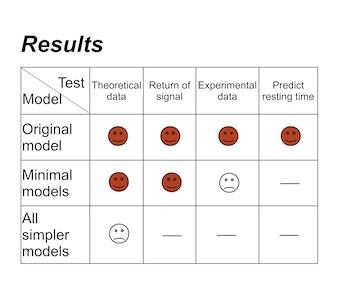
At least one feedback loop must be present in order for the model to be able to describe the desensitisation, but whether it is triggering the breakdown of cAMP or the phosphorylation of the receptor does not matter.
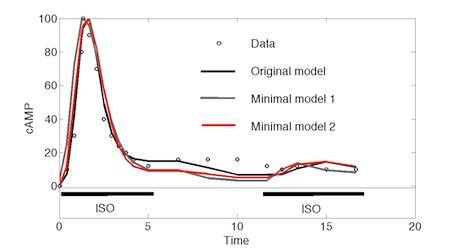
Theoretical curve
All three models could be fitted to data adapted from a previous study in which HEK-293 cells were stimulated with ISO, washed and then stimulated again. The first stimulation clearly shows the peak effect and the second a resistance to reactivation, as the desensitisation is still in effect.
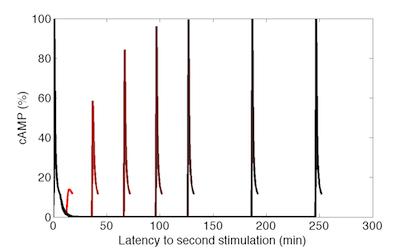
Return of signal
All three models showed that if the cells were allowed sufficient rest between the washing step and the second stimulation, the sensitivity to activation returned.
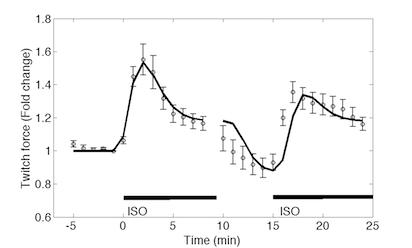
Experimental data
Twitch force in chicken cardiac tissue was used as an approximation for cAMP content when the receptors were activated by ISO. The resting time (5 min) was long enough for the desensitisation to go away.
The original model could describe the experimental data, but the minimal models could not.
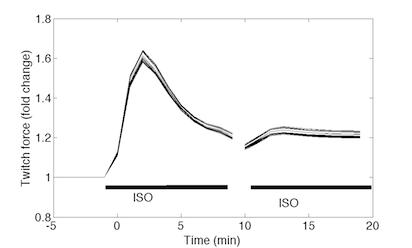
Prediction
The original model was used to predict how long the desensitisation lasted in chicken cardiac tissue. In this figure, the tissue has only been allowed to rest 1 minute.
The experimental setup did not allow for a test of this prediction.
Responsible for this page:
Director of undergraduate studies Biology
Last updated:
05/18/11
